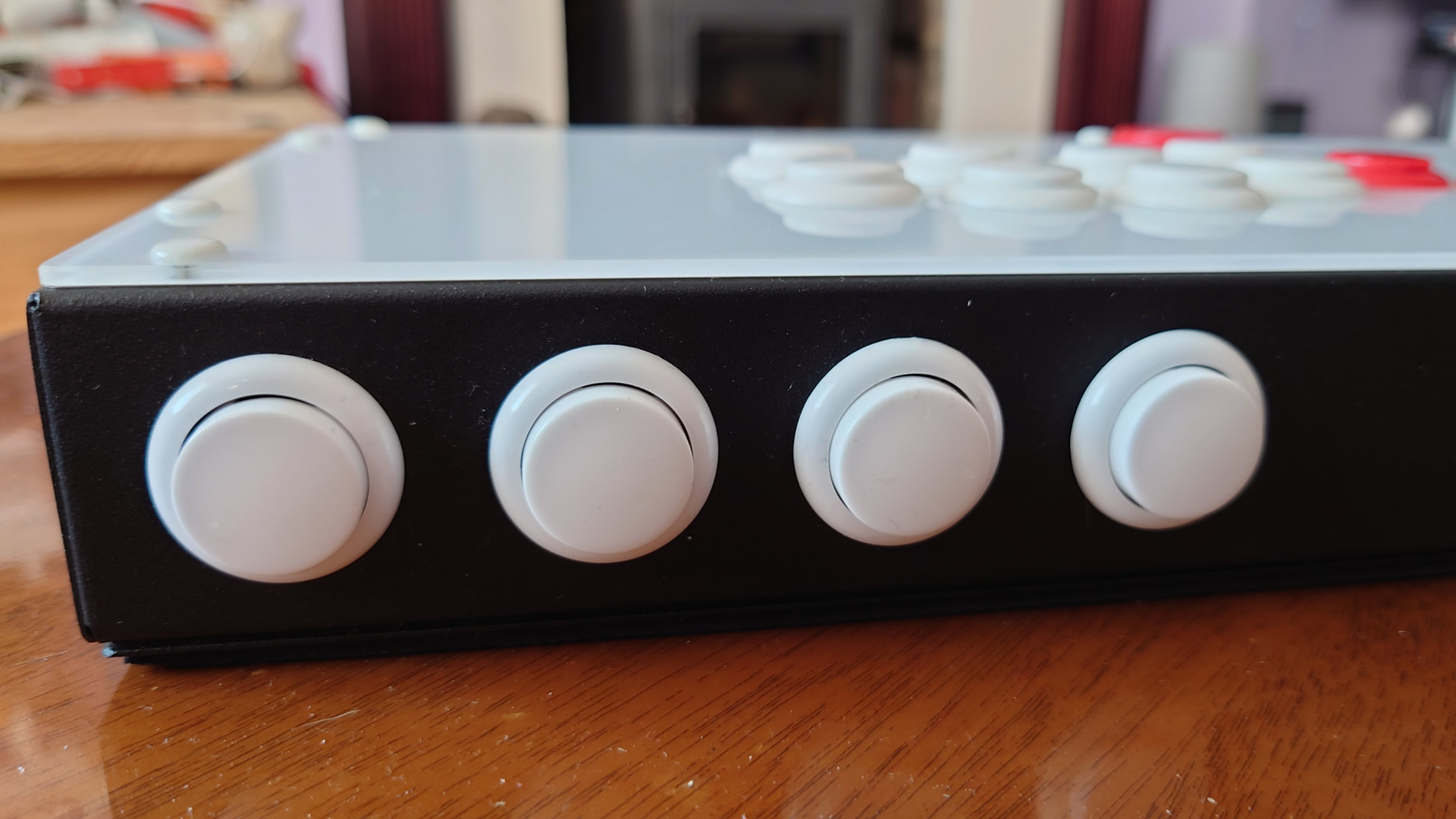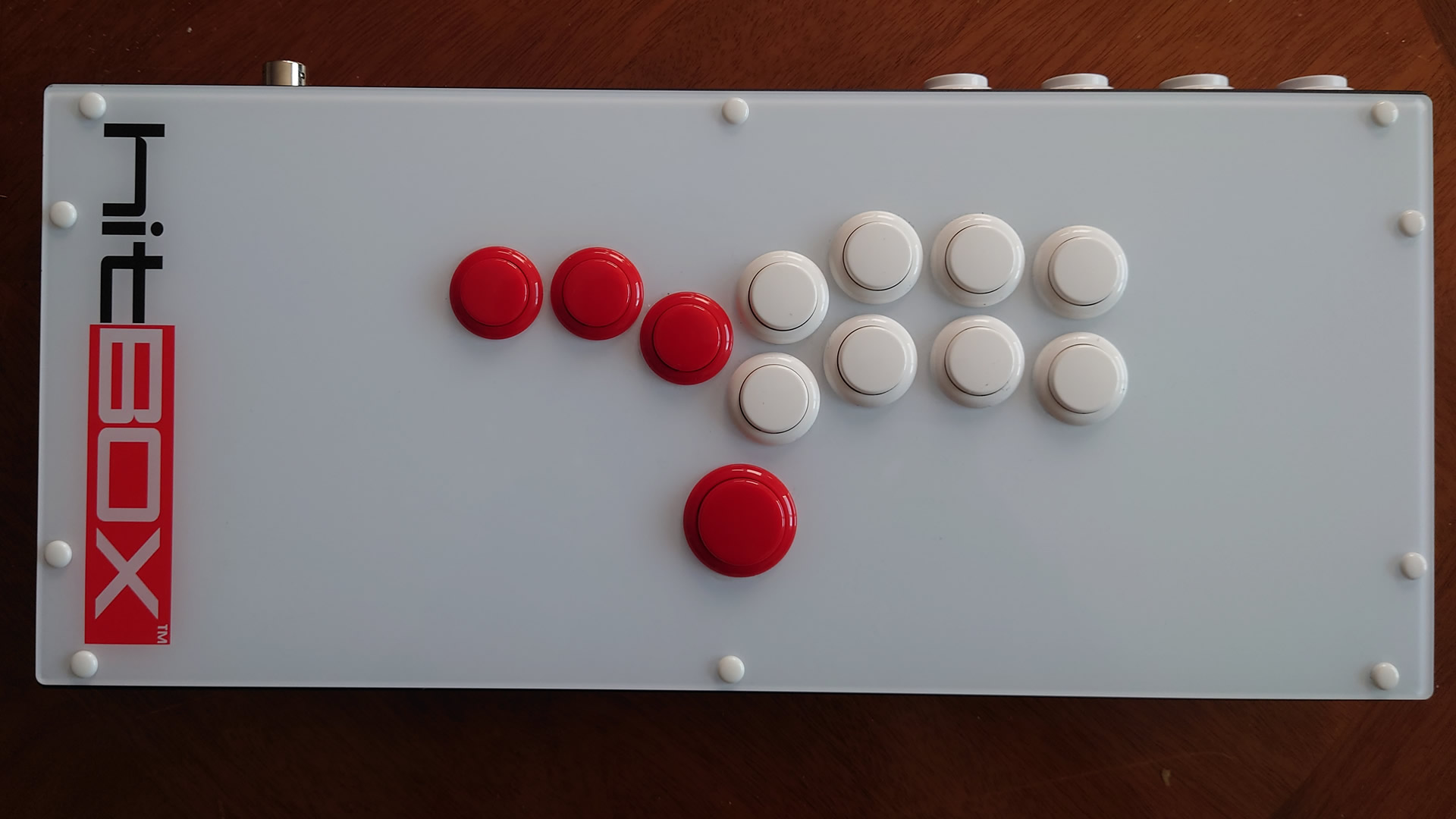GamesRadar+ Verdict
The Hit Box is a triumph for fighting games for consistent inputs that are perfect for amateurs and professionals in the scene alike. It's also excellent for retro style and 2D games as well.
Pros
- +
Easiest controller for new players
- +
Simplified motion inputs
- +
Fantastic build quality
- +
Sanwa-Denshi arcade buttons
- +
Fairly compact
Cons
- -
Limited availability right now
- -
Premium price tag
Why you can trust GamesRadar+
The Hit Box is a refreshed take on the usual fighting game controller. Armed with no physical joystick to speak of, meaning no analog movement, this sleek all-digital box provides an alternative, and in my opinion superior, way to get serious about the latest competitive titles compared to some of the best PC controllers.
You'll need to be an enthusiast of this genre of games, though. Priced at $249.99, the Hit Box is a sizeable investment for the average fighting game fan to make. However, if you're someone committed to pulling off advanced techniques, and mastering rock-solid fundamentals, this could very well be what you've been waiting for.
Design and Features
The Hit Box's now iconic layout has been around for about 12 years in the fighting game community, and that's for good reason. While many fight stick / pad hybrids have cropped up since, the Hit Box is the original, and the best regarded by many professional players.
On the face of it, we've got 12 Sanwa-Denshi arcade buttons; four colored red which are the direction buttons where your left hand goes, and eight white buttons that are used for face buttons and triggers for your right hand. There are also four larger buttons on the top of the unit, which act as pause, select, start, etc.
The overall design aesthetic of the Hit Box is understated and clean. The unit itself keeps to a minimalist white-on-red color scheme and this is carried through the buttons, the logo, and the face plate itself. It's a very pleasing design on the eyes, and far better than the intimidating presence of traditional fight sticks at this price range can be.

Performance
As someone who has played fighting games for a very long time, upwards of a decade, the Hit Box has completely changed the genre for me for the better. I usually prefer gamepads for the majority of 2D fighting games, but I can now say that in my extensive testing, that is now no longer the case; the Hit Box is now my controller of choice across the board.
The Hit Box's unconventional button layout does take some time to get adjusted to, of course, if you're making the leap over from some of the best controllers. For me, it took about 30 minutes to adjust to the control scheme in Guilty Gear Strive. What was very helpful to me as an adopter was the Hit Box website itself, which helpfully not only has advanced video tutorials on how to get set up with the unit, but also dedicated indexes for Tekken, Street Fighter, Guilty Gear, and King of Fighters - all of those games I regularly play on rotation.
In my testing, I found that advanced inputs were significantly easier in my games of choice, with the majority of my time being Guilty Gear Strive. Some fundamental input examples that were easier for me include the Dragon Punch input (Forward, Down, Forward), Half Circles (Backwards, Down, Forward), and 360-degree inputs; the latter of which has been made far more consistent with less human error that I typically find with an Xbox Controller's D-pad.

To put things simply, the Hit Box made me feel more confident with my inputs when playing high-pressure matches. It's a different approach, but one that became instinctively second nature to where returning to a traditional gamepad would be undesirable.
While the Hit Box is primarily marketed first and foremost for fighting games, the all-digital layout does have applications in other types of games, too. I've personally found this controller to be great for 2D retro titles, of which I have played through the likes of Sonic the Hedgehog 3 and got a decent way through Freedom Planet, too.
What's more, because the buttons are larger and easy to understand, there's also an argument to be made on the accessibility front. Seeing as the Hit Box natively works with not only PC, but PS5, Switch, and PS4 as well, this controller could be a great choice for new gamers or those who struggle with a usual gamepad in their day-to-day experience.

Should you buy the Hit Box?
I can easily and wholeheartedly recommend the Hit Box for anyone involved in the fighting game scene wanting to move on up from a standard gamepad but wanting something different to a standard stick. For the price of admission, though, you're getting an incredibly well-built, rugged, and versatile controller. It might not turn you into an instant Evo-ready pro, but it will eliminate a fair amount of mis-inputs.
Editor's note: Keep in mind that availability is currently quite limited right now, though. At the time of writing, the only way to get a Hit Box factory new is through the company's website, but we'll update you should that change in the near future.
How we tested the Hit Box
I logged about 40 hours of matches in Guilty Strive, Street Fighter V, King of Fighters XV, and Tekken 7. I also completed a full playthrough of Sonic the Hedgehog 3 in the Origins collection also. The Hit Box replaced my usual gamepad as my go-to model for 2D games.

Aleksha McLoughlin served as the Hardware Editor for GamesRadar from June 2021 until August 2022. Her main area of expertise was the PC gaming platform, which comprised buying guides, features, reviews, and news coverage on components and prebuilt machines. She was also responsible for gaming chairs and storage. She now works on a freelance basis while studying to become a university lecturer specializing in English for foreign territories. Prior to joining GamesRadar, she wrote for the likes of Expert Reviews, The Rory Peck Trust, No Clean Singing, Vinyl Chapters, and Tech Spark while also working with the BBC.




